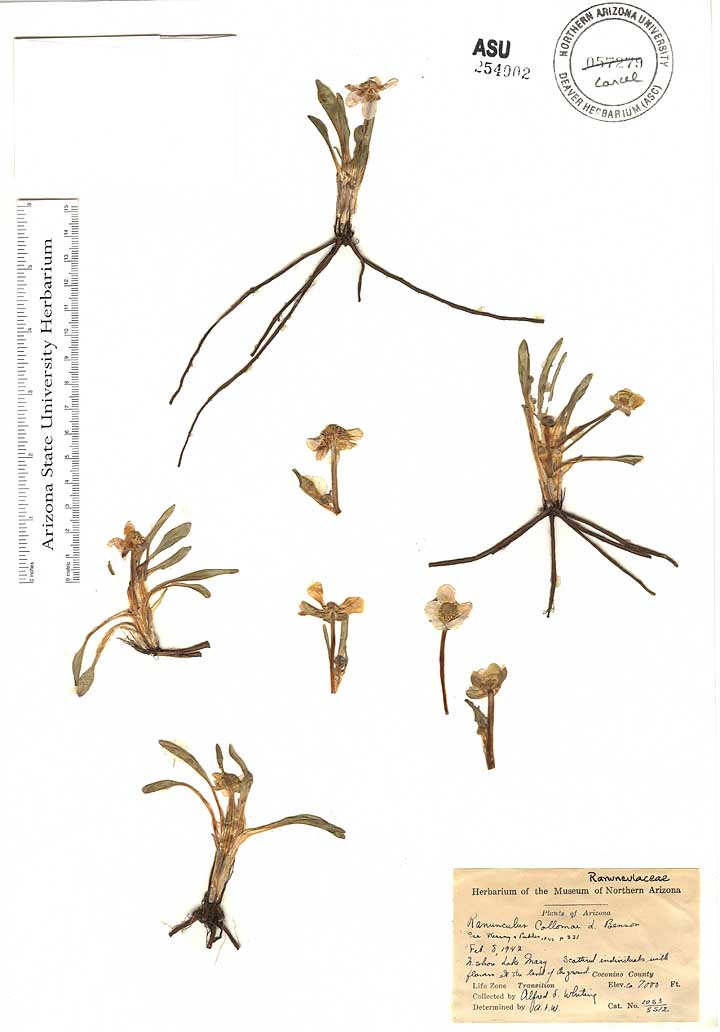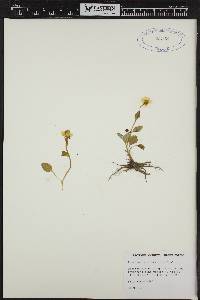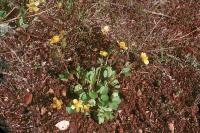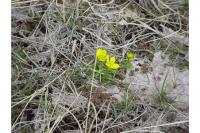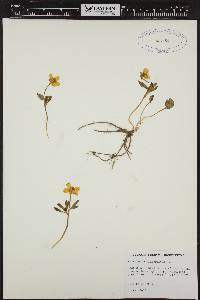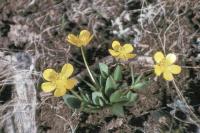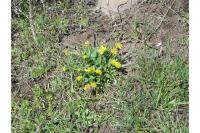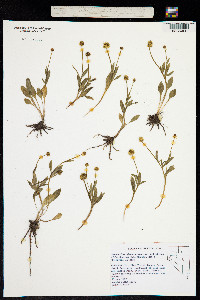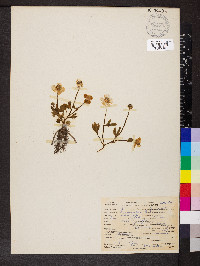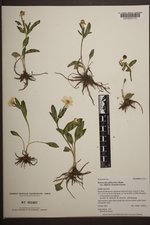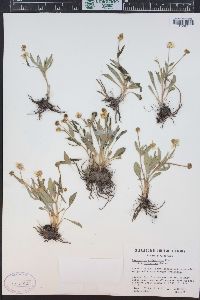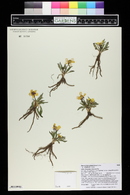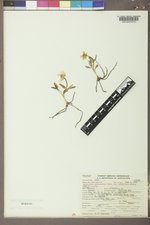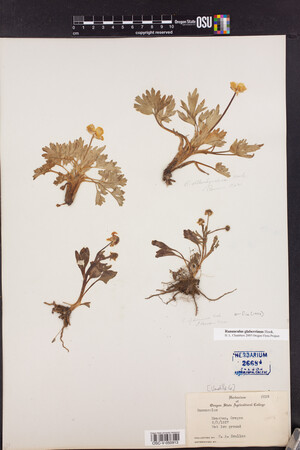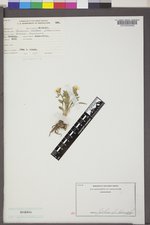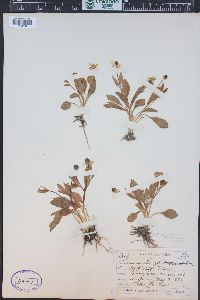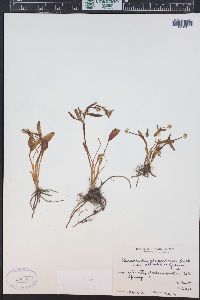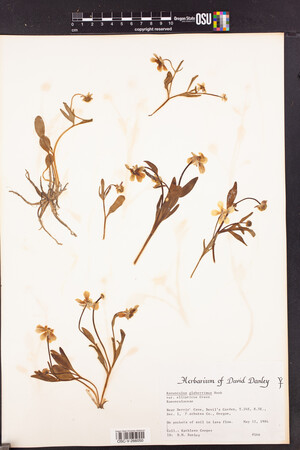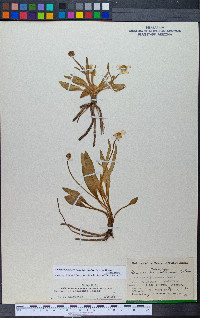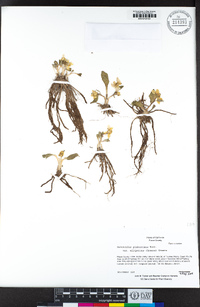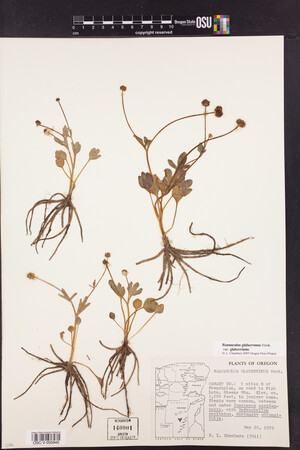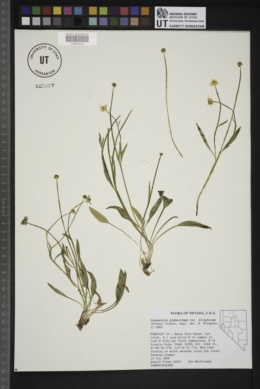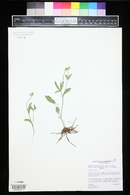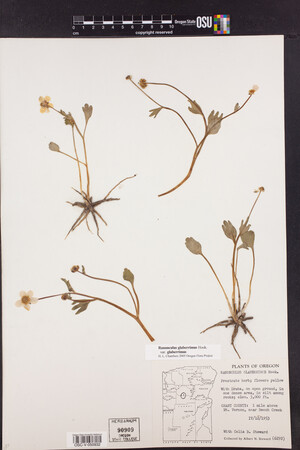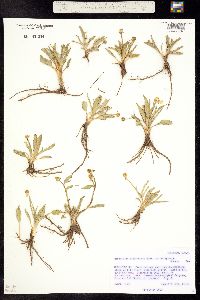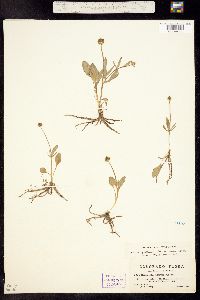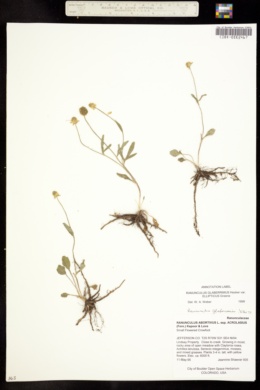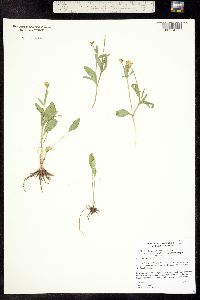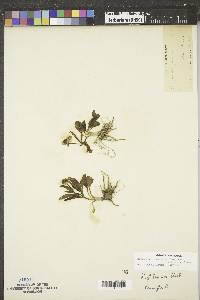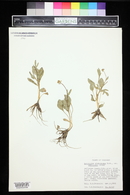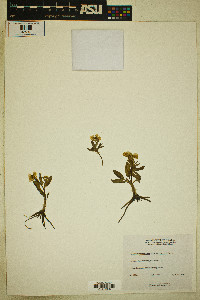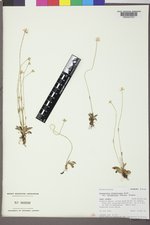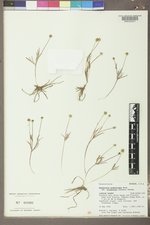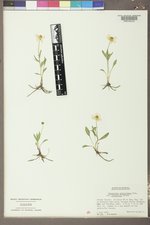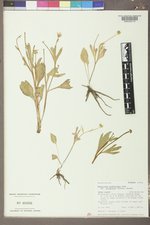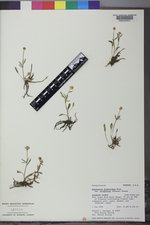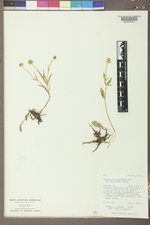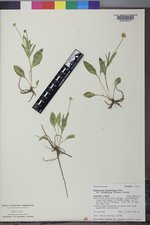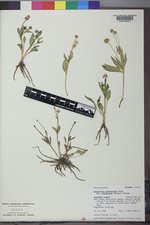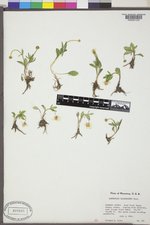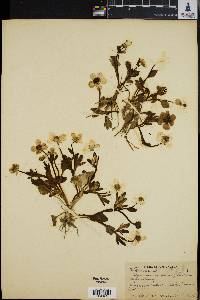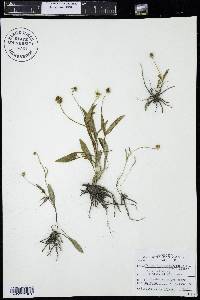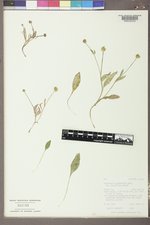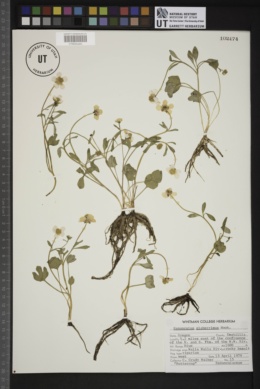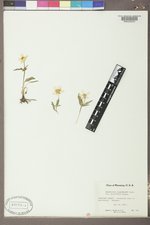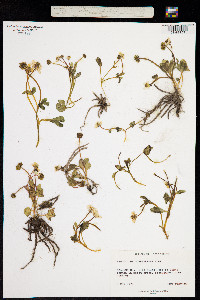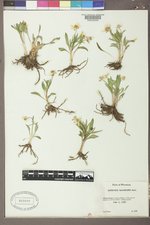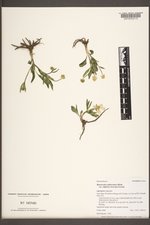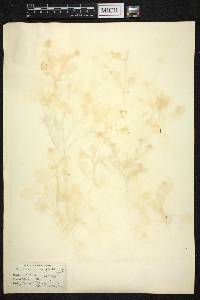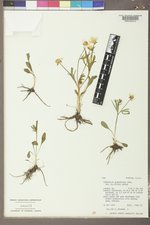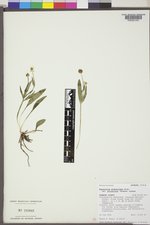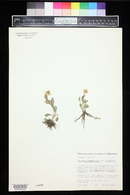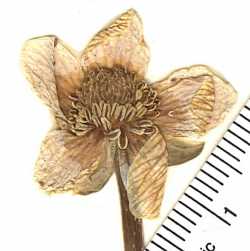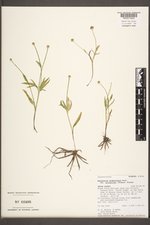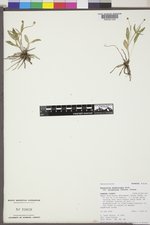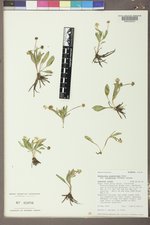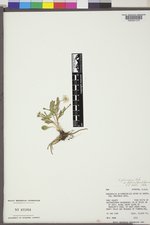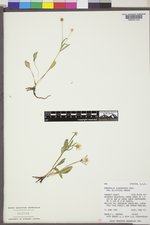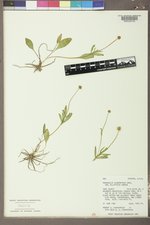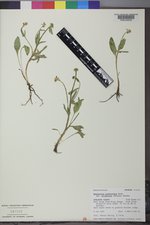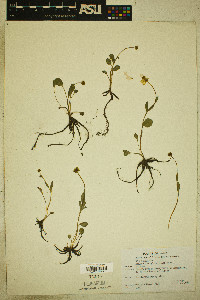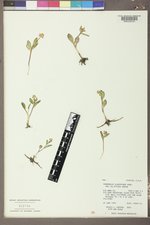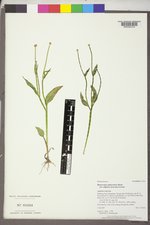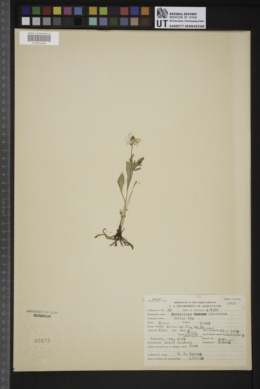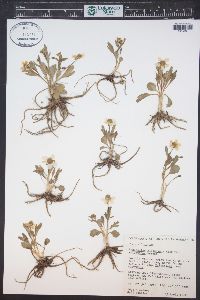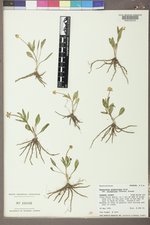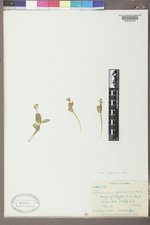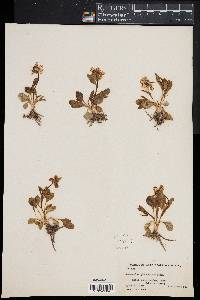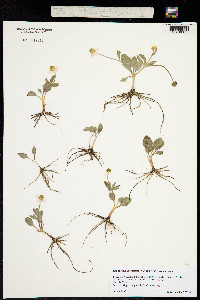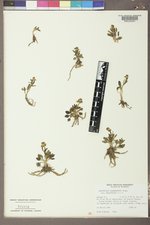Ranunculus glaberrimus
|
|
|
|
Family: Ranunculaceae
Sagebrush Buttercup
|
Stems prostrate or ascending, 4-15 cm, glabrous, each with 1-4 flowers. Roots cylindric, 1-3 mm thick. Basal leaves persistent, blades reniform or obovate to very narrowly elliptic, 0.7-5.2 × 1-2 cm, base truncate, obtuse or attenuate, margins entire or with 3 broad, apical crenae, apex rounded to acute. Flowers: pedicels glabrous or nearly so; receptacle glabrous; sepals 5-8 × 3-7 mm, abaxially glabrous or sparsely pilose, hairs colorless; petals 5-10, 8-13 × 5-12 mm; nectary scale glabrous or ciliate. Heads of achenes globose, 7-12(-20) × 6-11(-20) mm; achenes 1.4-2.2 × 1.1-1.8 mm, usually finely pubescent; beak subulate or lance-subulate, straight or curved, 0.4-1 mm. Usually only a minority of the ovaries develop, and the fruiting receptacle is completely hidden by aborted ovaries. Populations growing at high elevations ( Ranunculus glaberrimus var. ellipticus ) and low elevations (var. glaberrimus ) are usually well differentiated, but these varieties intergrade at intermediate elevations. The Thompson Indians rubbed the flowers or the whole plant of Ranunculus glaberrimus on arrow points as a poison (D. E. Moerman 1986).
General: Perennial, 4-15 cm tall; stems prostrate or ascending, glabrous; roots cylindric, somewhat fleshy. Leaves: Basal and cauline, alternate, basal blades ovate to very narrowly elliptic, 1.5-5.2 cm long, 0.7-2 cm wide, cauline blades similar, glabrous, margins entire, rarely with 3 broad, shallow rounded teeth at the apex, base obtuse to attenuate, apex acute to rounded; basal blades petiolate, cauline blades sessile or nearly so. Flowers: Inflorescence a cyme, 1-5 flowered; pedicels glabrous to sparsely hirsute; sepals 5, 2.5-6 mm long, glabrous; petals 5, 2-7 mm long, yellow; nectary scale attached basally, forming a flap over the nectary; flowers April- September. Fruits: Achene, numerous, arranged in a globose head, 7-20 mm long, 6-20 mm wide; body of achene 1.4-2.2 mm long, finely pubescent, the beak straight or curved, 0.4-1 mm long. Ecology: Ponderosa pine forests, moist slopes, seeps, depressions in grasslands, moist soils; 1800-2600 m (6000-8500 ft); Apache, Coconino, Mohave, and Yavapai counties; south- central to southwestern Canada, western to southwestern U.S. Notes: Ours, as here described, is var. ellipticus [=R. oreogenes]. Ranunculus eschscholtzii (Eschscholtz-s butterbup) is a perennial, 4-24 cm tall, erect to decumbent; basal blades are kidney-shaped, cordate, obovate, or broadly oblong, lobed or 3-parted, 0.5-4.1 cm long, the segments again lobed; inflorescence is a few- flowered cyme with glabrous pedicels; petals are 5-8, 6- 16 mm long, yellow; the head of achenes is cylindric to ovoid, 5-10 mm long, 4-7 mm wide; and the beak of the achenes is straight. Two varieties occur within our range, and are differentiated as follows: var. eschscholtzii has rounded or obtuse sinuses and segments of the basal blades; and var. eximus has acute to acuminate sinuses and segments. It occurs in alpine meadows and on open rocky slopes, found in our area on the San Francisco Peaks. Ranunculus pedatifidus (surefoot buttercup) is very similar, distinguished by having pilose pedicels. It also occurs in similar habitats on the San Francisco Peaks. Editor: Springer et al. 2008 |

